9 Insider Facts about Buenos Aires
Forget the tourist guidebooks if you really want to know Buenos Aires
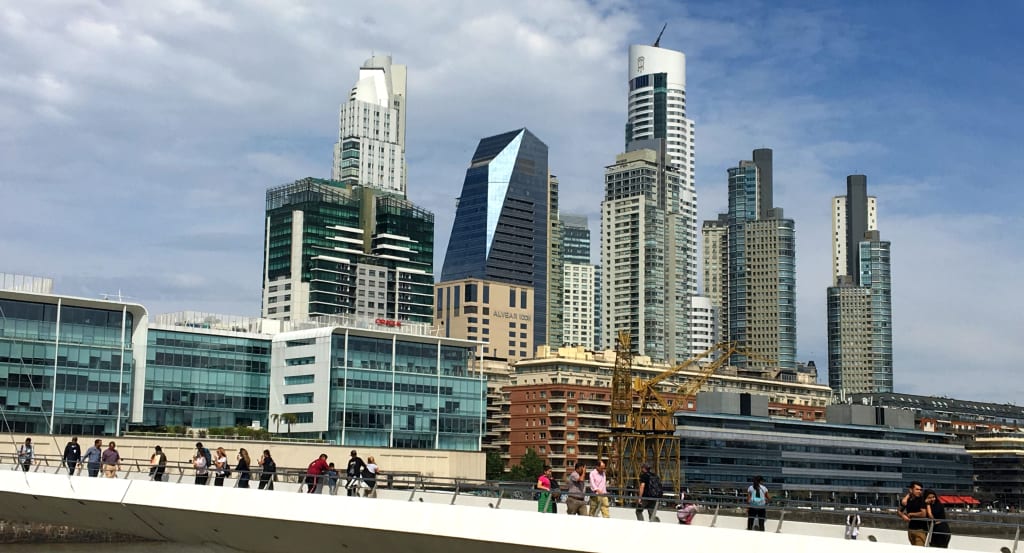
You'll be missing out if you visit Buenos Aires and follow the tourist guides and travel blogs. They're usually written by travellers and expats and you'll get an outsider's viewpoint.
They'll tell you that the city is the Paris of South America and you should visit La Boca, go to a Tango show, eat steak and drink Malbec. Yawn.
As a regular visitor and with a wife from the city, we can tell you there's a whole lot more you need to know to get the best out of Buenos Aires.
These are my 9 insider facts on Buenos Aires to help you get the most from any future visit.
1. Buenos Aires is not the Paris of South America
I've yet to read a travel guides or blog that doesn't claim Buenos Aires to the Paris of South America. It's not. The typical Buenos Aires barrio (district) looks more like the districts in other Latin American cities, as you'd expect.
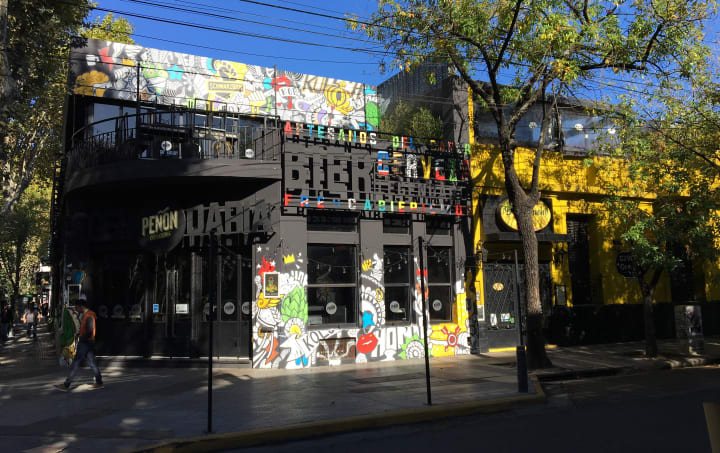
So why do guides fall back on this cliché? Lazy writing by outsiders I guess. I don't believe some of them have even been to the city.
To be fair, there is some historical basis for the Paris assertion. At the end of the 19th and early years of the 20th century, the wealthy districts of the city were redeveloped in the styles of Paris, including many of the cultural activities.
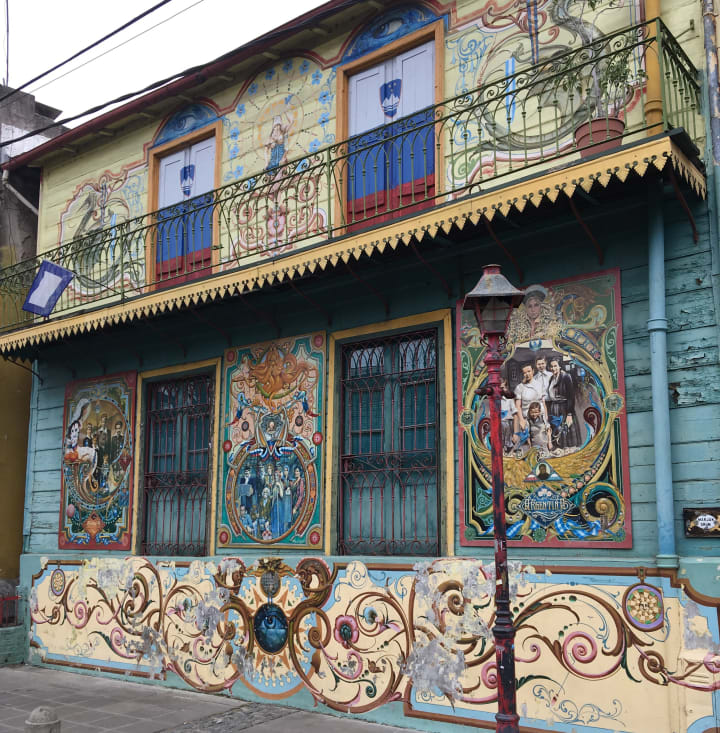
You can still see some of this Parisian architectural style around the city centre areas, but much of it has been swept away by modernisation and later developments.
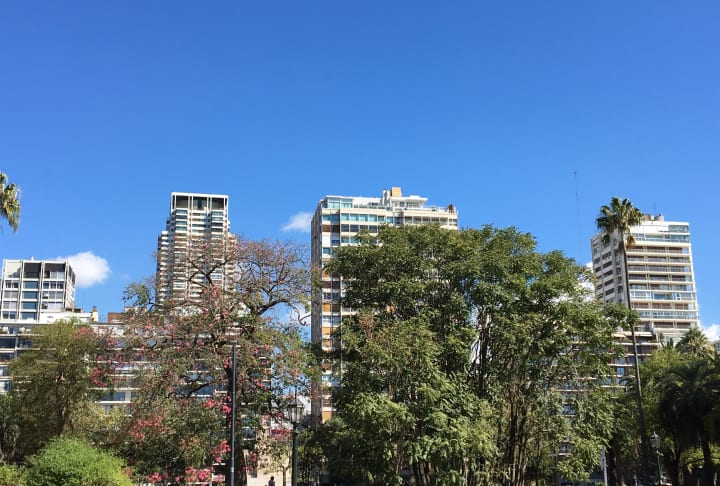
Go to Paris if you want Paris and visit Buenos Aires if you want to see a vibrant South American city.
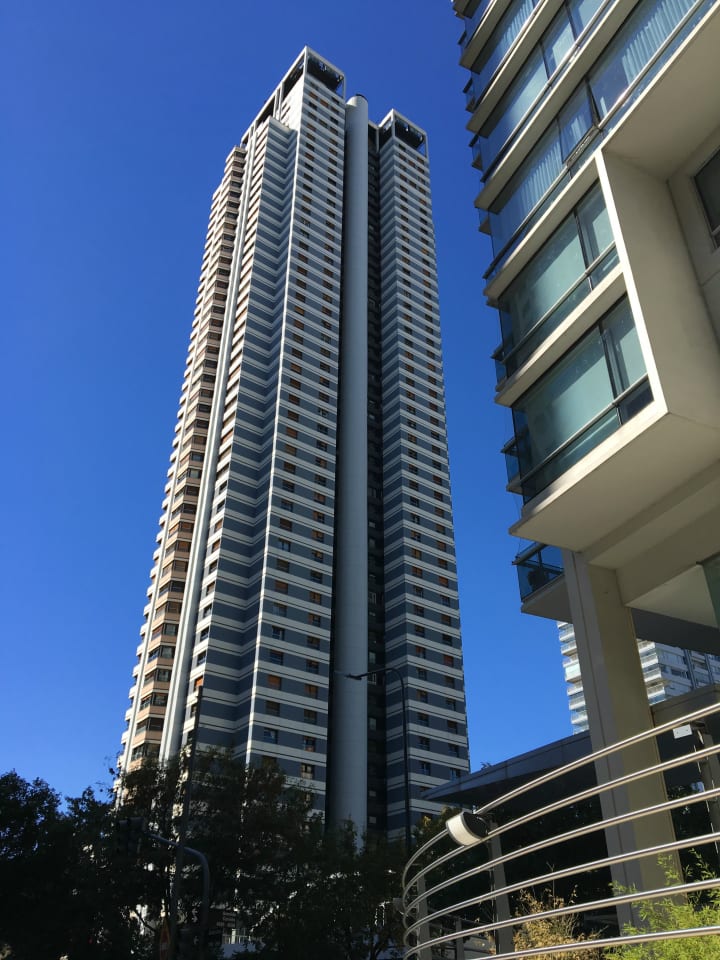
2. Food
Buenos Aires food is more than steak, despite what the tourist blogs tell you.
Yes, the meat (carne) is probably the best in the world and does form a part of the diet. Surprisingly, considering the enormous Atlantic coast line, fish and seafood is more difficult to find. If you can find it, it's pricey.

Food portions and servings are generally large; steaks can come in 400 to 600 grams (14-21 ounces) portions. Locals order one portion and cut it in two to share.
Most food however, is not steak but is based on Italian cuisine. You'll get pizzas, pastas, Milanesas and all types of amazing ice creams. Everything has an Argentinian twist.
Unless you're a cheese-a-holic, I'd avoid the Fugazzeta or the Napolitana, pizzas. Despite the names, they are not like any Italian pizzas I've ever had. The thick dough bases are filled with two-inch deep layers of full-fat cheese. Heart attacks on a plate. I tried one once and didn't need to eat anything else for about 24 hours.

And of course, there are the empanadas, a pastry pie with various options of fillings. For dessert, if you don't have ice cream, (in Dulce de Leche flavour) you need something else filled with Dulce de Leche, which is a kind of caramel spread. Although leche means milk, dulce means sweet. This is a euphemism for several hundred thousand calories of sugar.
Not just steak then.
3. Wine & beer
Wine
The guides will tell you to try Malbec, from Argentina's Mendoza province. There are hundreds more varieties in Buenos Aires shops and restaurants you'll have never seen before. By all means try it, I do. But you'll be missing out if you stick to only Mendoza Malbec.
Salta, a province in the north west of the country, is the other wine region and less well known outside of Argentina. Salta's specialty is Torrentés, an aromatic dry white.

Salta also has its own version of Malbec. Grown at high altitude, the wine is richer and more fruity. I haven't seen this much outside of Argentina and you should look out for this version for a change.
Beer
Most blogs and guides will tell you to try the famous Argentinian brand, Quilmes. Don't bother. It's an industrialised light, thin beer and lacks real flavour. Apparently it used to be nice.
There are lots of better beers, give them a try instead. Antares, for example, is a newer brand that specialises in craft beers and ales but there are others.
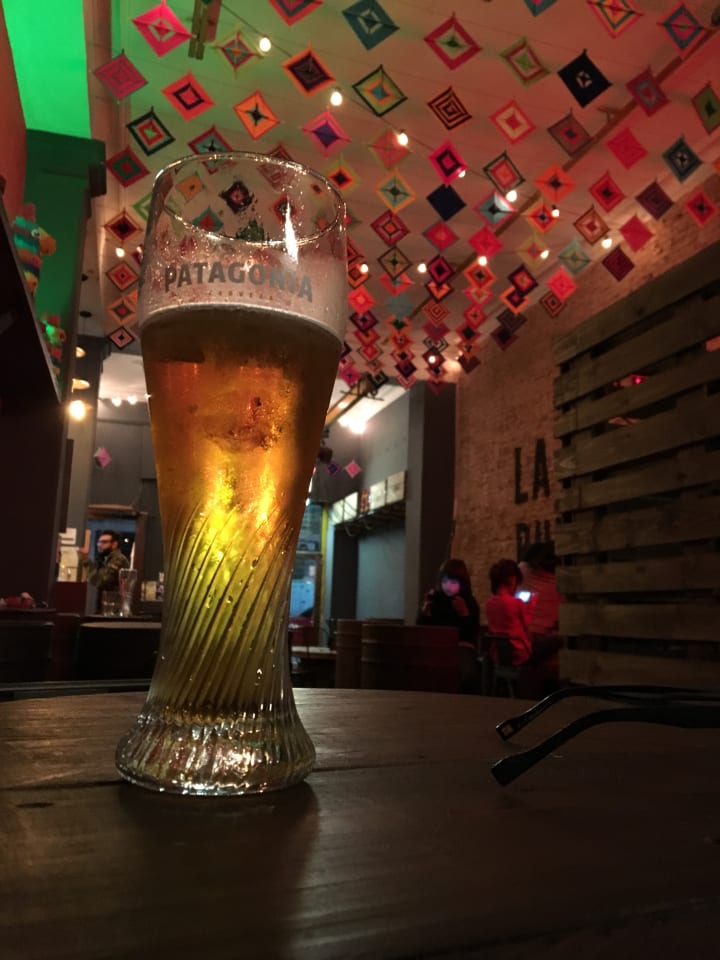
I'd suggest giving Red Beer a try. It's marketed as an English ale but, as an Englishman, I'd never heard of red beer before. It's lovely though, so who cares.
4. Tango shows
Avoid the tourist shows at all costs. They are expensive and not authentic.
If you want to see proper Buenos Aires tango, head instead for Boedo or Abasto districts (barrios) to take in a locals' event. The more touristy barrio of San Telmo also has tango shows in small bars, cafés and in the street which are good.
They're often free if you buy a snack and a drink or drop a few coins for the street dancers. And so much more authentic.
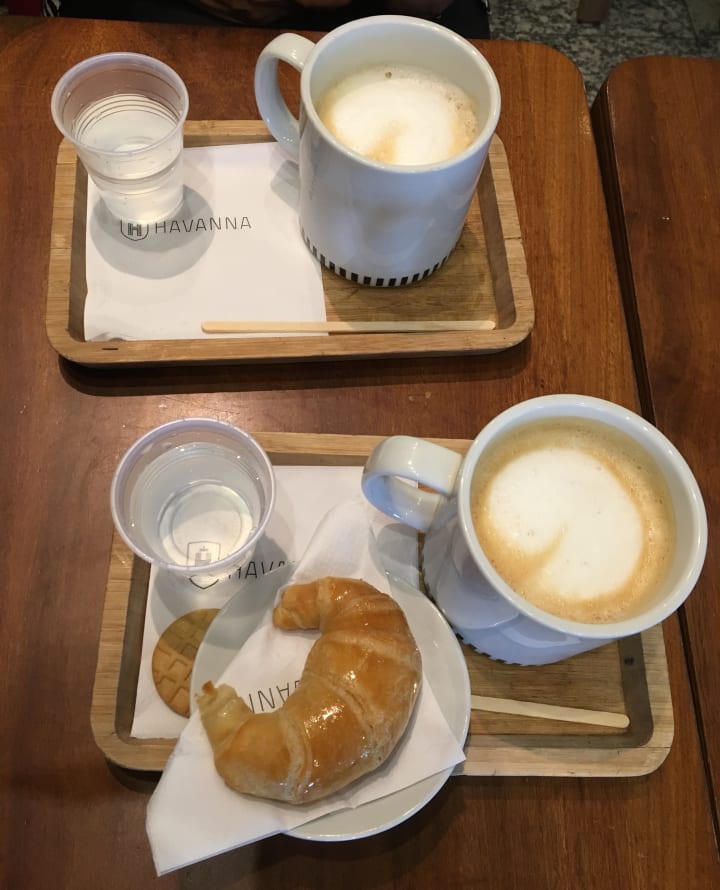
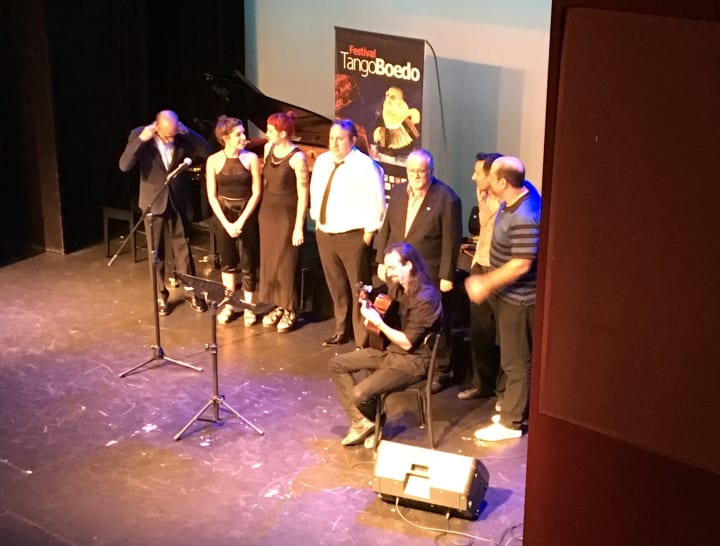
You wander in, find a table, order a coffee, beer or a glass of wine with some media lunas (croissants) or sandwich de miga (three-layered sandwiches).
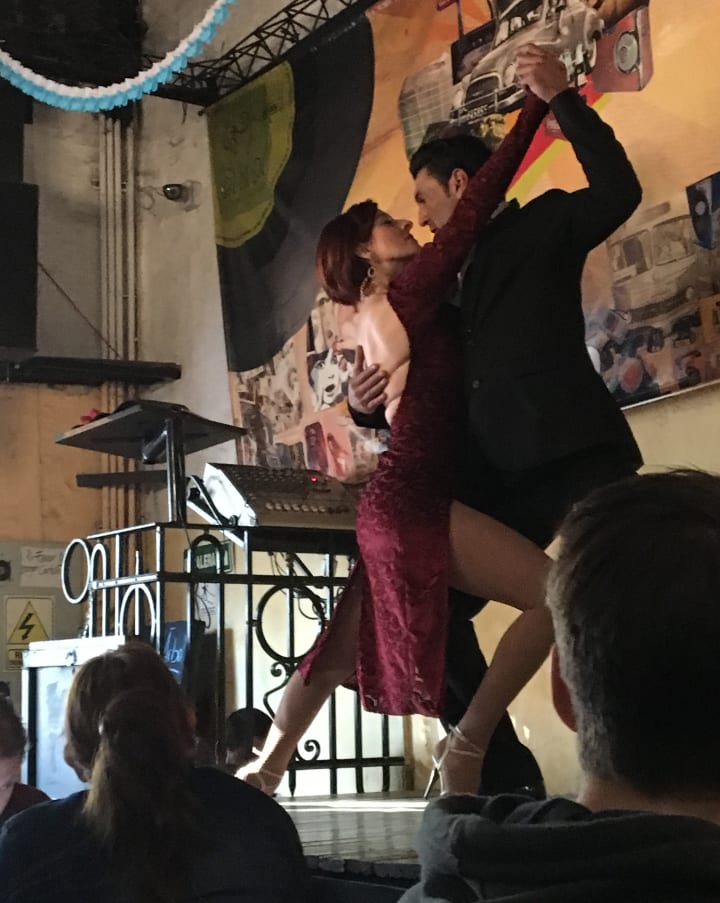
5. The Language
English is not widely spoken away from the major tourist and business hotels so you'll need to brush up on your Spanish. In particular you'll need to tune into the distinctive Porteño (people from Buenos Aires) accent.
There's no th sound for z like in Spain, it's an s sound. A y and a ll is a 'sho' sound rather than the yer sound of everywhere else that speaks Spanish. So calle, meaning street, sounds like cah-shay rather than cai-yay. Yo, meaning I, becomes sho when spoken by a Porteño.
Their sing-song accent sounds more like Italian than Spanish. You'll get used to it.
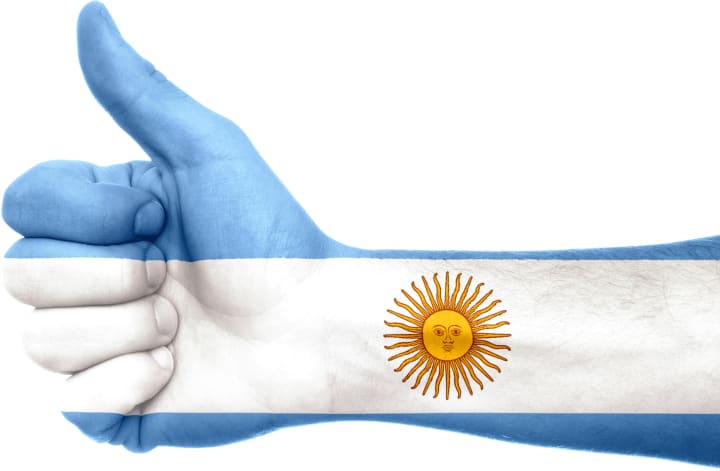
There is also some different grammar and different spellings. The informal tu meaning you, is replaced by vos in Buenos Aires. You also have several different verb conjugations for vos: tenés instead of tienes (you have), pensás rather than piensas (you think) and vivís for vives (you live), for example.
They don't use the plural informal vosotros (you all/you both) form at all, using the formal plural ustedes instead for all plural you options.
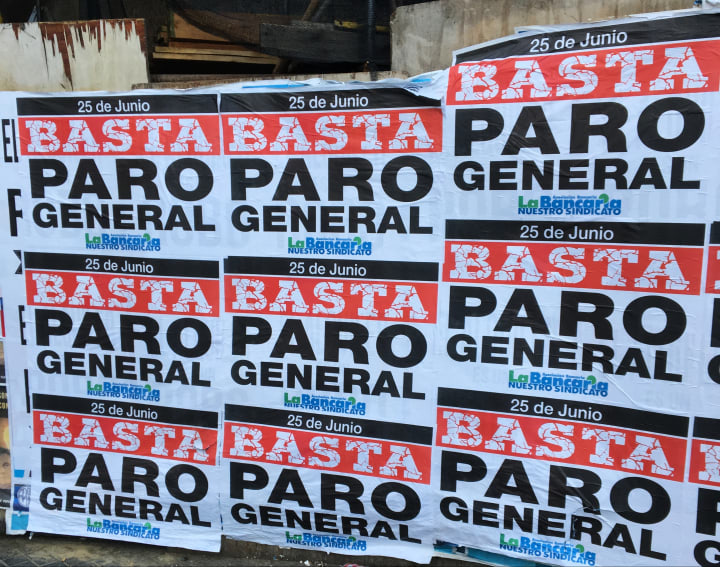
If that wasn't confusing enough, they will throw in some Lunfardo. This is a Porteño street dialect or slang which originated from Italian and other languages.
You'll regularly hear words such as fiaca (vago-lazy), pibe (chico-young man), guita (dinero-money) and laburar is commonly used instead of trabajar (to work).
One particularly common word is boludo. It means idiot but gets used in a variety of contexts. I'd advise you not to use it as it can be quite bad if used out of context.
There's little point in trying to learn Lunfardo. If they use a word you don't catch, just ask what it means. They'll apologise and switch to the Spanish word for you.
As for standard Spanish, they have a few expressions not used elsewhere:
- Dale - literally, do it or let's do it. Used as an affirmative in reply to a question. Would you like coffee? - Dale. Shall we go to the cinema? - Dale.
- Mira vos - literally, look at you. It means, that's nice or good for you.
- Viste? - do you see? You know?
- Me entendés (entiendes in Castillian)- similar to viste.
6. Changing money
Inflation in Argentina runs at around 40% a year at present and the Argentinian Peso is not particularly stable.
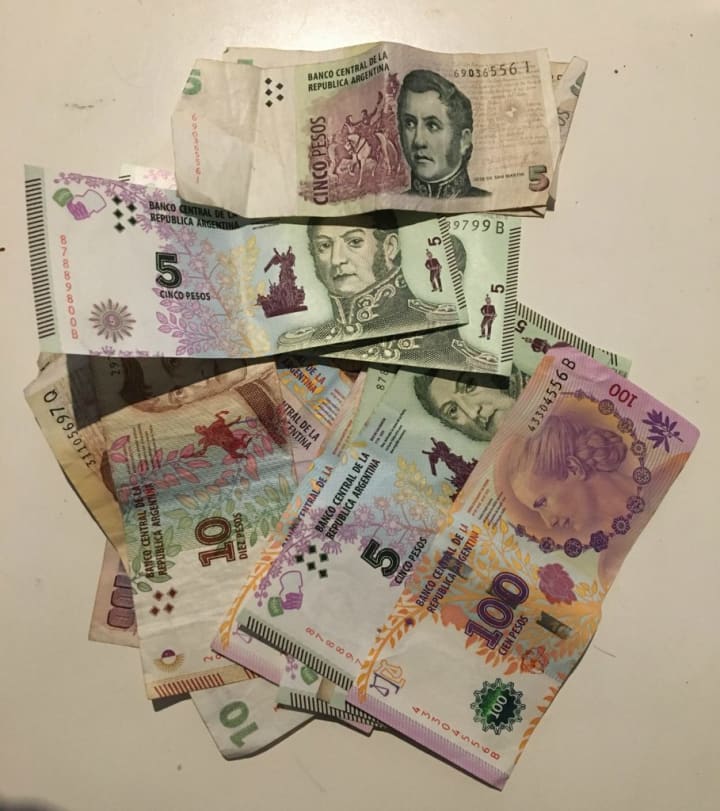
Although most restaurants accept major credit cards, many other places only take cash. You will therefore need to get Pesos to stay in Buenos Aires and this is where it all gets a little messy. Not least because the sign for the peso is also a $.
I recommend you exchange your currency in Buenos Aires. Remember the inflation rate? If you're there for more than a week, your cash will quickly lose value. In addition to this little snag, there are two exchange rates: an official one and an unofficial one. The unofficial rate is much better.
At the time of writing, the official exchange rate was US$1 = 88 pesos
The unofficial rate, called the Dollar Blue, was US$1 = 145 pesos.
How can that be? I have absolutely no idea.

So how do you get this Dollar Blue rate? You will need to go to a 'semi-official' Cueva. To find a Cueva, listen out for people in the street calling out "cambio, cambio," (change or exchange) or look out for handmade signs saying cambio, in shops windows or on street stalls selling magazines.
Although you should be ok, you still need to be careful when you use a Cueva. Change small amounts at a time, due to inflation, and so you don't lose a lot if they rip you off. Make sure you know roughly how much you'll get for your currency beforehand and count your exchanged money meticulously before you leave.
You can always go to the bank or an official exchange booth and get the official rate but you'll lose money that way. And you'll still need to be careful and count your change.
7. Transport
The public transport network is extensive and ridiculously cheap by North American/European standards. Typically you'll pay just a few pesos for a trip around the centre, about 35 Euro cents, 45 US cents.
You need to buy a SUBE travelcard to use public transport as they don't accept cash. The SUBE is a credit card sized travelcard used on buses, Metro and overground trains. It can be topped up at the train stations and tobacconists.
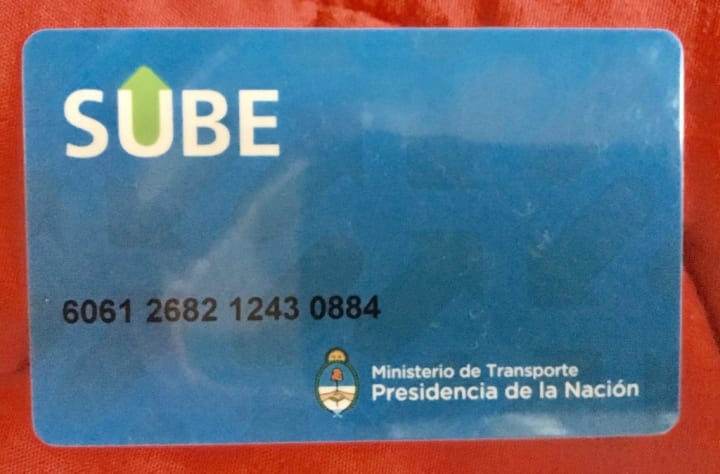
You buy the cards for around 25 pesos at a SUBTE station ticket office, a street 'kiosko' (tobacconist/sweetshop) or a tourist office.
On the Subte
The underground Metro train network is called the Subte. It's indicated by a circular yellow sign above the entrances in the streets with Subte written on them. Subte is short for subterraneo which means underground in Spanish.
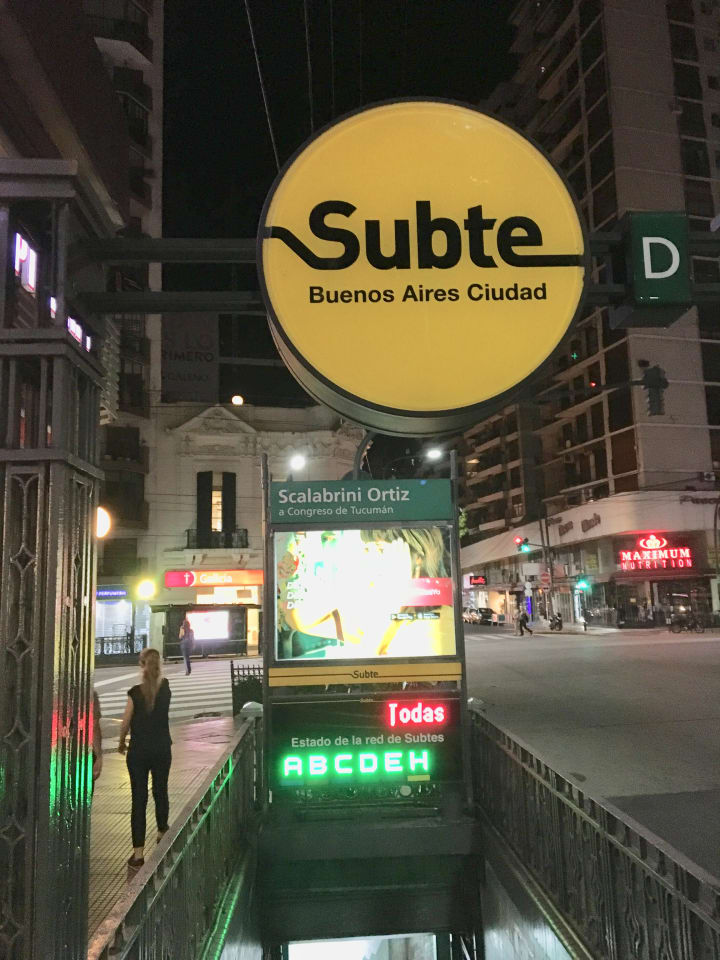
It's a fixed price for any journey on the network. About 35/45 cents.
Many of the Subte stations have beautiful murals depicting scenes from Argentinian history.

On the buses
You'll see the city better on the bus but it might be a whole lot more slowly. The traffic can be awful. There is no shortage of buses though and they run 24 hours. If you get a Metrobus, they have dedicated lanes so you can wizz past the stationary cars stuck in jams.
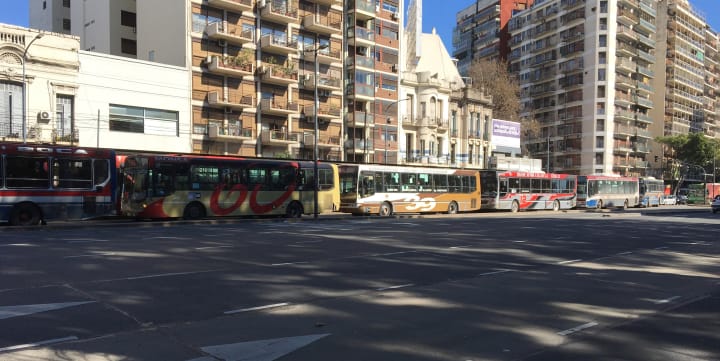
The fare price is based on distance. You need to tell the driver where you're going. They will set the appropriate fare and you place your SUBE card on the reader to pay.
On the Trains
Overground trains are the best option to visit suburbs and areas outside of the city, such as Tigre on the River Plate delta.
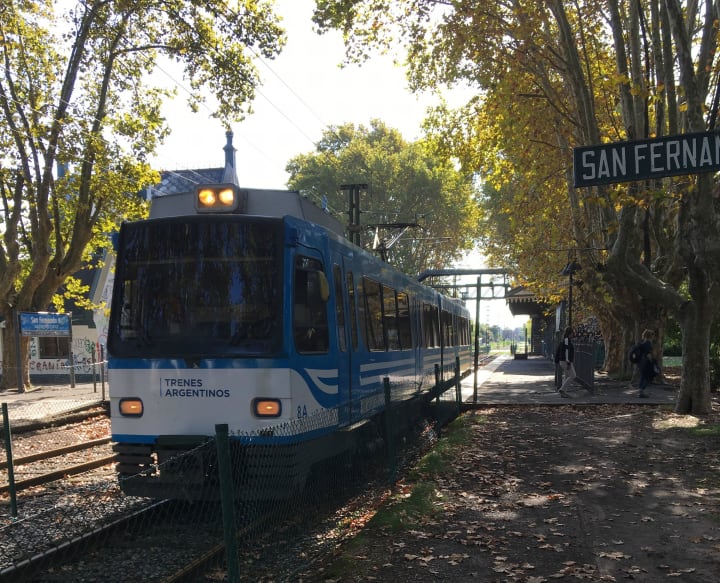
You use your SUBE card but, unlike the Subte and buses, you need to also touch out at the exit barrier because you're charged by destination. If you forget to tap, your card will be charged to the end of the line.
Graffiti seems to be a national pastime in Buenos Aires, particularly in the stations.
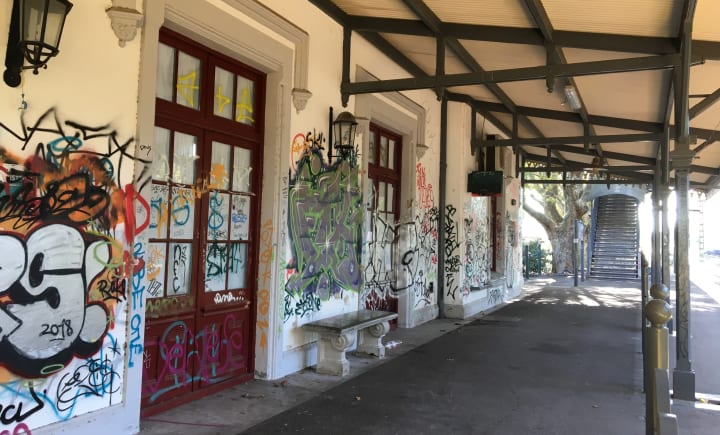
Vendors and buskers are common on the trains and on the Subte.
Be careful of your bags, wallets, purses and watches at all times on all public transport. Keep cameras out of view at any time.
On the taxis
Taxis are cheap by European and North American standards so they're a great option. Drivers are almost always locals and knowledgeable but don't usually speak any English.
The usual rules apply for taxis, make sure they put the meter on, check your approximate route beforehand to avoid a tour of the city and watch your change.
On foot
Pedestrians use the marked crossings and respect the pedestrian lights. This isn't anything to do with respect for traffic laws but because they want to stay alive. You need to be vigilant and alert when crossing, even when the crossing lights are in your favour.
The otherwise friendly Argentinians undergo a personality change when behind the wheel. Cars, motorbikes and particularly buses will drive around you if they think they can see a gap, brushing your sleeves and knocking your elbows.
Be very very careful.
By plane
There are two main airports serving Buenos Aires: Ezeiza, officially Ministro Pistarini Airport, and Aeroparque, officially Jorge Newbury Airport. Everyone says Ezeiza and Aeroparque.
Ezeiza is about 14 miles (22km) from the city. Unlike most major international airports there is no public transport to and from the airport. You have to get a taxi or a Manual Tienda Leon shuttle bus.
Usual rules apply, use only the official booths in the arrivals area inside the airport and agree the fare beforehand. They should give you a ticket with the price on.
Never accept offers from people who approach you touting for taxi business. Ever.
Check at the official booth whether the taxi will charge you for the motorway tolls on top of the fare or whether the price include the tolls.
For national flights, the smaller Aeroparque airport is situated by the coast in the city within Palermo district. There are buses and local taxis and an official taxi rank outside arrivals. Use only this taxi rank.
8. The people
In general, the Porteños are polite and generous. Until they get behind the wheel of course.
Don't push past the locals in the street or in shops, it's considered very rude. Say permiso, excuse me, if you want to get by. They'll happily move and often apologise for being in the way.
Learn the basic words and phrases for greetings. Buenos dias, buenas tardes, buenas noches, hola and que tal. All are used to greet you in restaurants, shops, coffee shops. Even strangers passing in a building or bar will greet you. Buenas noches (good night) is used to say hello during the late evening/night time rather than goodbye.
Hola obviously means hello and que tal means how are you? It's a very common greeting.
The pace of life can be a lot slower. Service in restaurants is usually slow but generally polite and efficient. For Argentinians a meal is more of a social event and a time to chat and socialise.
Be patient and polite and go with the custom. You'll find you'll enjoy it too.
Sport
Football (soccer) is an instant topic of conversation. The Argentinians are very familiar with European football as most of their best players play in Europe. Buenos Aires is home to many major football teams but don't try to go to a game unless you're with a guide or a local.
Only members can buy entrance tickets and only home supporters are allowed in. Official tourist guides will charge around US$200 for a game. That's a rip off as the entrance price is only around US$5 to US$10. Watch the game in a bar with locals. Besides, it can be dangerous in and around the stadium.
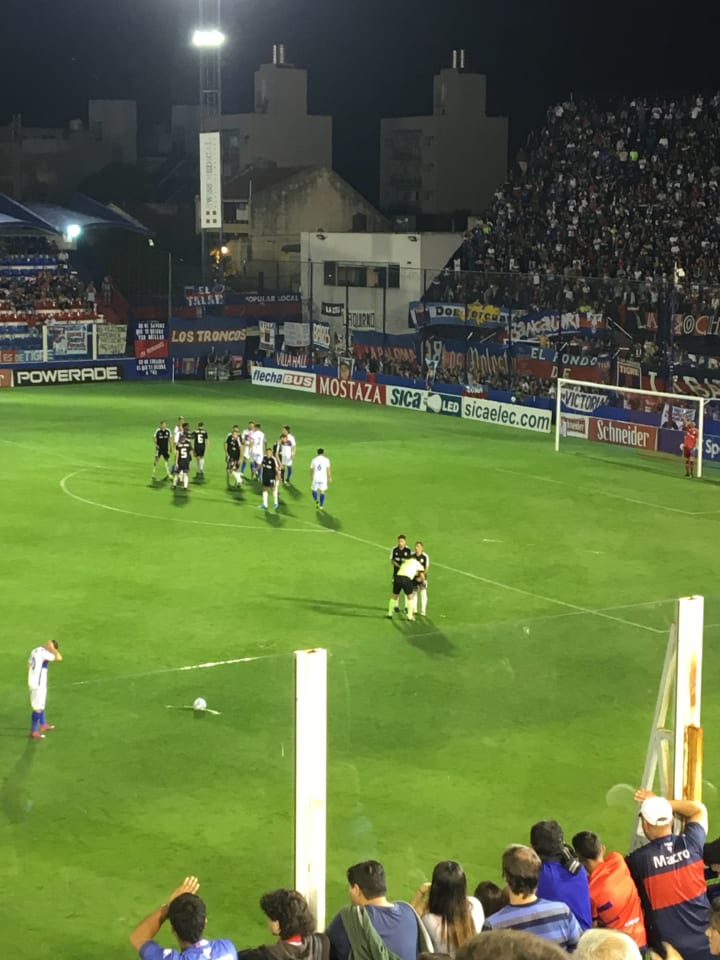
Rugby, polo and horse racing are also big in Buenos Aires. US Sports are not followed.
Tipping
Tipping is not so prevalent as in the US or UK. Tips for taxi drivers and waiters are around 10%. If you don't want to tip, or just a smaller amount, no one seems too bothered.
Socialising
Friends, colleagues and family greet each other with one kiss on the right cheek. This includes men greeting men. Men often shake hands and kiss you on the cheek at the same time.
Be aware. For Porteños, time is often a vague and fluid concept. If you make an appointment to meet a local they could be on time or they could be two hours late. For many Porteños, an agreed time is the time to start thinking about it as opposed to actually being there.
Take a book and relax while waiting.
The Porteños tend to do things late too. I'm not sure when they sleep. Evening meals are often at 10pm, sometimes later, and many restaurants don't even open until 8.00pm.
After the evening meal, when you're thinking of bed, Porteños will probably want to go somewhere else for a drink or an ice cream and then sit around chatting until two or three in the morning.
9. Districts to stay in
Guides tend to recommend Palermo or maybe San Telmo districts. They're wrong, avoid these places.
Palermo and San Telmo are where most of the night life is. They are easy to travel to and great places to go out. But. Do. Not. Stay. There.
Night life? You might want to sleep at some point? Argentinians often start to get going around midnight. Some clubs are still rocking at 6am. If you think you can catch up on sleep during the day. Forget it. Narrow streets, traffic, diesel buses and the fact Argentinians think the car horn needs to be blasted every three seconds will put a stop to that thought.
You might also want to pay less for your accommodation than the tourist spots. Look therefore at staying in the adjacent fashionable barrios of Belgrano, Recoleta or Colegiales. Transport is great and taxis cheap.
You'll get a slightly higher chance of getting some sleep in these barrios. But only slightly. This is Buenos Aires and if the car horns, diesel buses and noisy bars don't get you, the barking dogs, loud music and screaming neighbours will.
Buenos Aires is most definitely not a quiet country village.
The Insider View
Buenos Aires has everything you'd expect a major city to have. If you have some insider knowledge, it's even better.

About the Creator
Alex Markham
Music, short fiction and travel, all with a touch of humour.






Comments
There are no comments for this story
Be the first to respond and start the conversation.